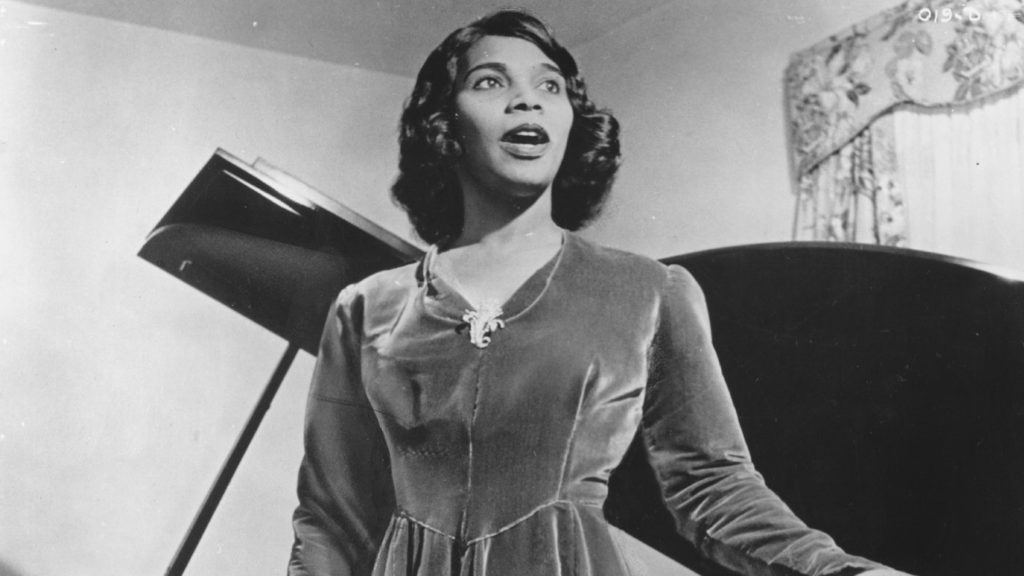
The Negro Spiritual developed during the 1800s during slavery in the United States. At that time, many slaves were forceably converted to Christianity by their missionary captors and masters. Singing spirituals was a form of resistance as it was their own. The songs reflected he conditions of enslavement and the experience of black people that were under the system. Marian Anderson was one of the most famous spiritual and Opera singers of the 20th century.
In 1925 at the age of 28 Anderson won first prize in a singing competition paid for and supported by the New York Philharmonic. She lived in New York to chase after private studies and in 1928, she sang at Carnegie Hall for the first time. Shortly after, she made her first appearance at Wigmore Hall in London. She toured Europe but returned to the United States in 1935 to make her first performance/appearance at Town Hall in New York City.
By late 1930s Anderson was a famous, highly complimented concert performer. Even so, she was still not allowed to eat at certain restaurants or stay in certain hotels while touring because of Jim-Crow. Albert Einstein reacted by hosting her in his home each time she visited the Princeton University area.
In 1939, the Daughters of the American Revolution denied Anderson to sing to a integrated crowd in its Constitution Hall. In the resulting extreme uproar of many people, First Lady Eleanor Roosevelt withdrew from the DAR and along with Walter White of the NAACP, began a series of actions to have Anderson perform on the steps of the Lincoln Memorial with 75,000 in attendance on April 9, 1939. She opened the show with “My Country ‘Tis of Thee.”
She entertained American troops in World War II and the Korean War. In 1943, she finally sang before an audience at Constitution Hall at the invitation of the DAR. In 1943, she married architect Orpheus Fisher.
In 1955, she became the first African American to perform with the Metropolitan Opera in New York City. The following year, she published her self-written life story, My Lord, What a Morning. In 1957, she sang at the inauguration of President Dwight D. Eisenhower. He later made her a goodwill ambassador. In 1958, she became a US delegate to the United Nations. She also sang at JFK’s Inauguration in 1961.
She was also an active supporter of the civil rights movement, performing benefit concerts for the Congress of Racial Equality (CORE) and the NAACP. In 1963, she sang at the March on Washington for Jobs and Freedom. The same year, she was one of the original recipients of the newly re-instituted Presidential Medal of Freedom. Anderson began her farewell tour at Constitution Hall on October 24, 1964. It ended at Carnegie Hall on April 18, 1965.
Marian Anderson had over 1,500 songs in her collection, sang in nine languages, and performed on four continents. She received national honors throughout her life, including the NAACP’s Spingarn Medal in 1939, the United Nations Peace Prize in 1977, and a Grammy Award for Lifetime achievement in 1991. In 1980, the US Treasury created a half oz gold medal with her likeness, and in 2005 a memorial postage stamp was issued in her honor.
On April 8, 1993, Marian Anderson died in Portland, Oregon.
By: Rosie Simpkins


